

Table of contents
- The right location
- The best floor
- planting and transplanting
- Care for
- Pour
- Fertilize
- Cut
- multiply
- The growth
- The heyday
- diseases and pests
- Is the Yucca gloriosa hardy?
- Is the candle palm lily suitable for planting in tubs?
- How do I care for a candle palm lily in a bucket?
- How do I overwinter a candle palm lily in a bucket?
- Overwintering in winter quarters
Palm trees are not exactly native to Central European gardens, they just prefer tropical temperatures. Although the candle palm lily is not a "real" palm tree, it does have a palm-like appearance. Therefore, it is often planted in the garden and creates a little holiday feeling there. With good care, it will even bloom after a few years, making it look even more exotic.
The right location
In the southeastern United States, the climate is mostly sunny, warm, and dry. The Yucca gloriosa likes it the same way. So it needs a warm, sunny and dry location. That's where it thrives best.
The best floor
The candle palm lily does not tolerate wet soil or waterlogging at all. It absolutely needs a rather dry and well-drained, preferably sandy soil. If your garden soil is too heavy or too loamy, mix some fine gravel or sand into the soil. That loosens the ground. He may also be rather lean, the Yucca gloriosa does not have a great need for nutrients.
planting and transplanting
You can plant the candle palm lily during the entire vegetation period, i.e. from spring to autumn. It is very suitable as a solitary plant but also for small groups of about three plants. Here, however, you should keep a sufficiently large planting distance, because the Yucca gloriosa later becomes quite large and sprawling. You should calculate a minimum distance of around 60 to 80 centimeters.
Care for
The Yucca gloriosa does not require a lot of care, but it is very sensitive to all kinds of moisture, even if it comes from above, from rain or from watering it too much. However, there are some cultivars that do better in wet conditions.
Tip:
If you live in an area with a lot of precipitation, then you should definitely treat your candle palm lily to rain protection, because it will die if it is excessively wet. Alternatively, buy a cultivar that is less sensitive to moisture.
Pour
You should only water a Yucca gloriosa a little, it is used to drought. Only water the candle palm lily well immediately after planting. As a result, the soil is washed to the roots and the plant roots well faster.
Fertilize

Fertilizing is usually not necessary for the candle palm lily outdoors, because most garden soils contain enough nutrients. If your soil is particularly poor, give your Yucca gloriosa a little perennial fertilizer or well-rotted compost for the first year after planting. But use the fertilizer sparingly, because a candle palm lily is quickly over-fertilized and that is not good for her.
Cut
The Yucca gloriosa does not need pruning. However, it is recommended to cut off the dried inflorescences. This is primarily for optics. Occasionally some leaves will dry up. You can also remove these without hesitation. As the leaves have quite sharp edges, it is better to wear gardening gloves when doing this work. It is also advisable to cut the leaves and not tear them off.
multiply
the propagation of the Yucca gloriosa is very easy, because it forms offshoots itself. You only have to take this off, preferably in the fall. Fill some flower pots with a mixture of soil and sand and plant the cuttings in them. The young plants should overwinter indoors, they do not tolerate frost. In the spring you can then put the small candle palm lilies outdoors. But wait until the temperatures there have risen to approx. 20 °C have risen.
The growth
The candle palm lily grows rather slowly and initially does not form a trunk but only a rosette of leaves with sturdy sword-shaped leaves reminiscent of palm leaves. The grey-green to blue-green leaves are about 30 to 50 cm long and have relatively sharp tips. Only after several years does the Yucca gloriosa develop a trunk that is up to two meters high.
The heyday
The candle palm lily blooms only after several years, but it is worth waiting for the exotic flowering. Fragrant, bell-shaped flowers with a diameter of approx. 2 to 3.5 cm. The flowers are usually white to greenish, but other flower colors can also occur in cultivated forms. The flowering time is in late summer or autumn.
diseases and pests
Diseases and pests rarely occur with the candle palm lily because it is very robust. The greatest danger comes from the combination of waterlogging and severe frost. Occasionally the lily beetle also makes an appearance. This is a small red beetle that can cause a lot of damage by eating leaves.
Is the Yucca gloriosa hardy?
Originally from south-eastern North America, the candle palm lily is more used to warmth and sun than low temperatures and cold winters. Nevertheless, it tolerates frost down to about - 20 °C without special protection. However, she does not particularly like wet conditions, even in the cold season. Therefore, it does not always survive cold, wet north German winters. Dry frost, on the other hand, is rarely a problem.
Is the candle palm lily suitable for planting in tubs?
You can also cultivate a candle palm lily in a bucket or a large flower pot. Since it generally grows quite slowly, it has enough space there for several years. You can beautify your balcony as well as your terrace with a Yucca gloriosa. However, these should be located in such a way that your candle palm lily is in the sun for several hours a day.
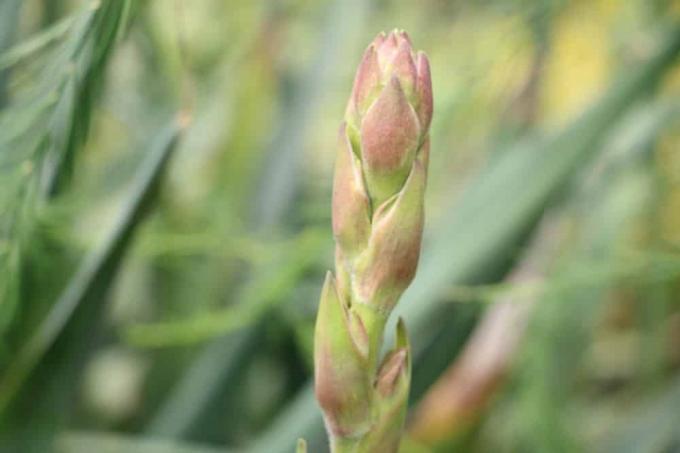
Be sure to plant your candle palm lilies in sufficiently heavy planters so that they cannot tip over even in the wind, and use a mixture of potting soil and sand. The bottom of the pot should have a drainage hole for excess irrigation water and a drainage layer to keep the hole from clogging with soil. In the tub, the candle palm lily grows more slowly and does not reach the same height as in the open air, even with age.
How do I care for a candle palm lily in a bucket?
Potted and outdoor plants hardly differ when it comes to care. However, the container plant needs some fertilizer during the vegetation phase, because the nutrient supply in the planter is naturally limited. Give your Yucca gloriosa a tiny portion of perennial fertilizer regularly from May to August. Repot the plant about every two to three years, ideally in spring (March or April). The time for repotting is reached at the latest when the plant becomes unstable due to its growth and the tub is about to tip over or if the roots of your candle palm lily are already out of the tub outgrow Then choose a slightly larger pot.
How do I overwinter a candle palm lily in a bucket?
You can either overwinter your candle palm lily in a tub well protected outside or in a cool winter quarters. Outside, however, you must protect the root ball from freezing. Since the frost can reach the roots from all sides, protection from below is also necessary. Wrap the entire planter with an old blanket, several jute bags or bubble wrap. In addition, place the container on a wooden or styrofoam plate. Make sure your Yucca gloriosa doesn't get its feet wet. It is best to place the plant protected from rain and wind.
Overwintering in winter quarters
If your candle palm lily is still small and reasonably handy, then you can bring the plant to winter quarters. This should be cool but mostly frost-free. For example, a cool conservatory or a greenhouse is suitable, a dark basement room is less suitable. However, the Yucca gloriosa should survive short periods of frost with temperatures that are not too low, even in the bucket without any problems. In winter, the plant is not fertilized at all and watered very little.
 garden editorial
garden editorial I write about everything that interests me in my garden.
Learn more about palm trees
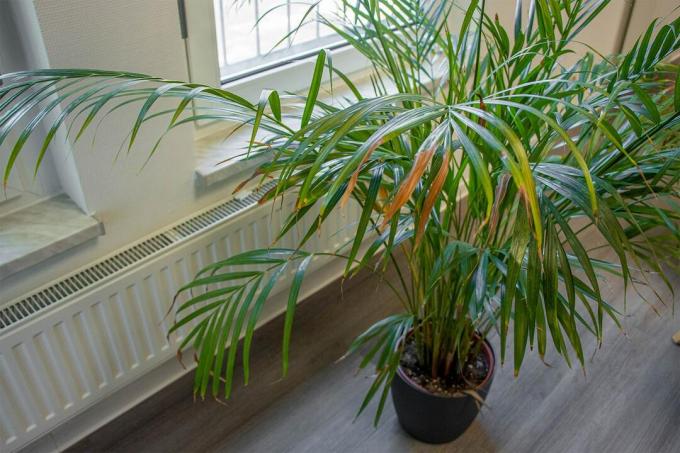
Palm leaves hanging: save yucca & co
Palm trees give the home a southern flair. However, if Yucca & Co. let their leaves droop, their sight is rather desolate. The causes of hanging palm fronds vary. A rescue attempt is always worthwhile.
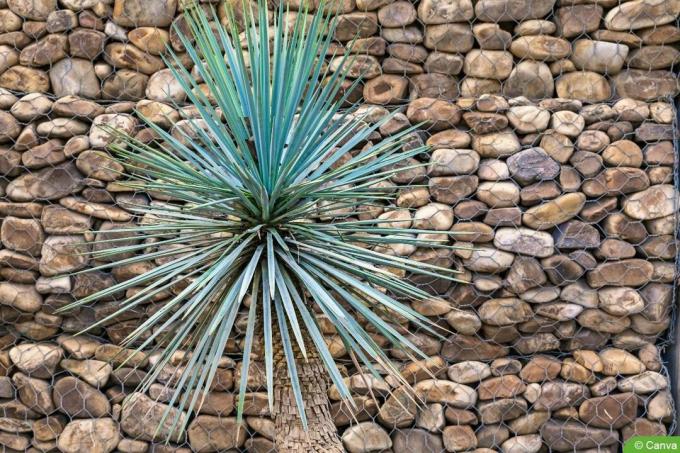
Blue palm lily, Yucca rostrata: 12 tips for care & Co.
The blue yucca (Yucca rostrata) is one of the most fascinating Yucca species. Since it hardly requires any care, it is also suitable for the office. Planted in the garden, it is considered hardy when it is dry.
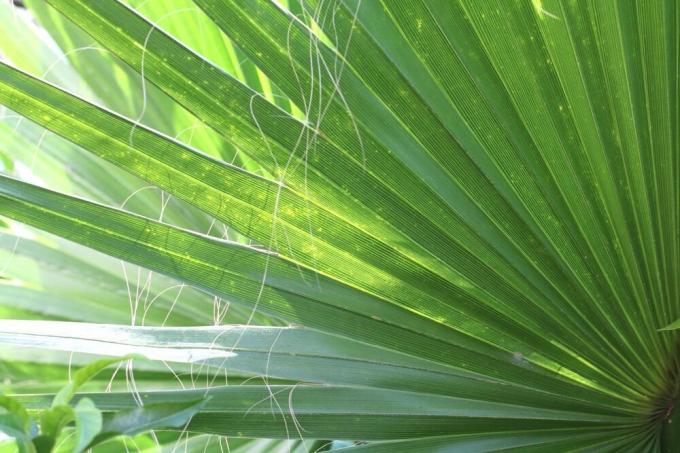
Washington Palm: Care From A-Z | Overwinter Washingtonia robusta
The Washington palm is a decorative plant that can grow to an impressive size. Due to the lack of winter hardiness, the plant is usually kept indoors in this country. When it comes to care, the palm makes certain demands so that healthy development can occur.

Areca palm, Dypsis lutescens: basics of care
The Areca Palm is a beautiful plant for indoor greenery. When it comes to care and location, the palm has certain requirements, if these are met, the plant will thrive. In order for the plant to grow constantly green, it needs the right lighting conditions.
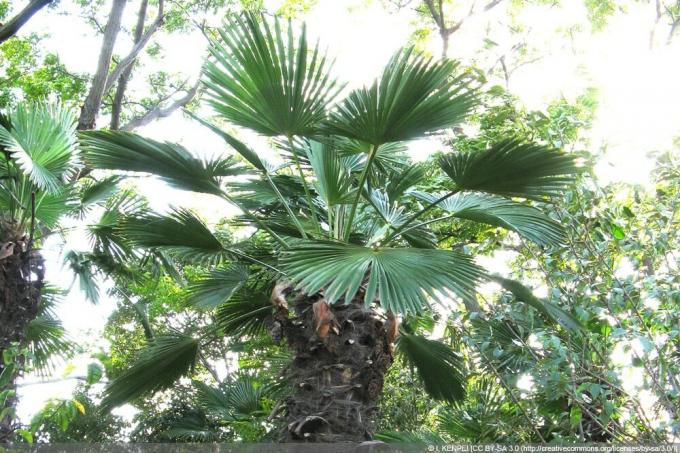
Wagner's hemp palm, Trachycarpus wagnerianus: Care from A-Z
If you want exotic flair in your garden or on your terrace, you can't avoid Wagner's hemp palm. No wonder: the extremely decorative umbrella palm not only looks impressive, but is also very robust. More about this is here.

Golden fruit palm: is Chrysalidocarpus lutescens poisonous to cats?
The golden fruit palm is a popular houseplant that scores with its attractive appearance. However, many pet owners are unsure whether the plant could be toxic to cats. There is also a risk of confusion with other palm species that definitely have toxic properties.
